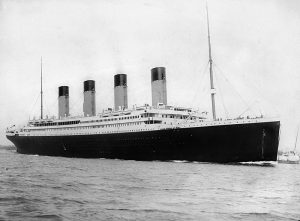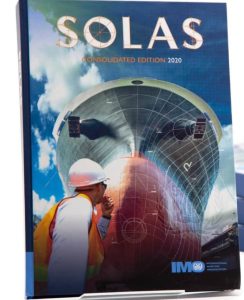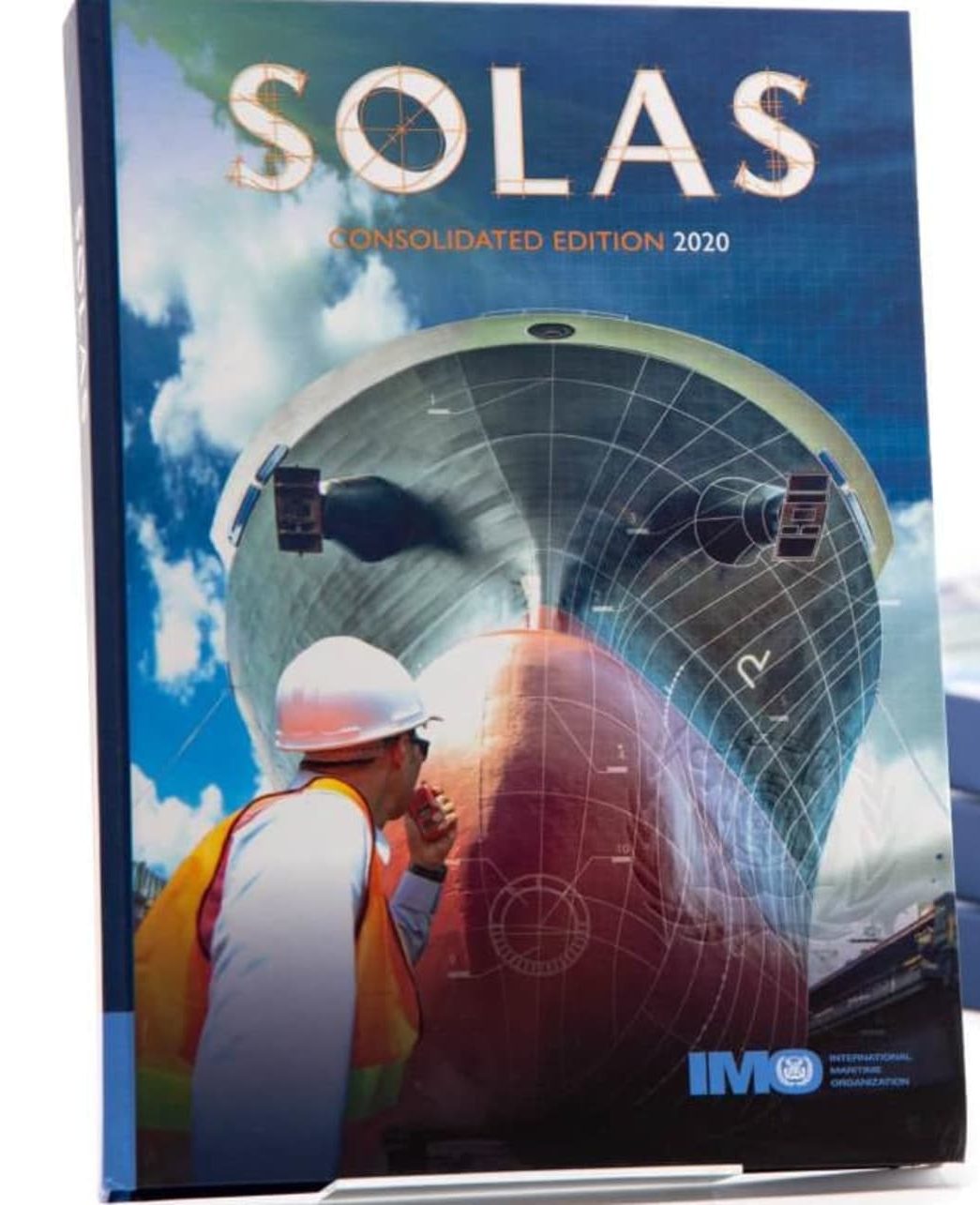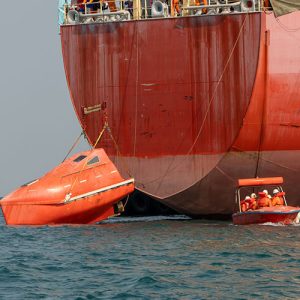The International Convention for the Safety of Life at Sea (SOLAS) is one of the most critical international maritime conventions , along with the MARPOL Convention and the STCW Convention. It establishes the minimum safety standards in the construction, equipment, and operation of ships to ensure the safety of vessels and their passengers.
Historical Background of SOLAS

The SOLAS Convention originated after the 1912 Titanic disaster, which claimed over 1,500 lives. The 1914 SOLAS (International Convention for the Safety of Life at Sea) introduced key maritime safety regulations, including:
- Adequate lifeboats for all passengers and crew.
- Continuous radio communication for better distress response.
- Improved ship design and safety measures, raising construction and maintenance standards.
Although the 1914 version was disrupted by World War I, it set the foundation for future updates in 1929, 1948, and 1960, which incorporated advancements in shipbuilding and emergency preparedness. The most significant revision came in 1974, introducing the “tacit acceptance procedure” to swiftly implement amendments without requiring full ratification, enabling rapid adaptation to new risks and technologies.
Key Objectives of the SOLAS Convention
 The primary goal of the SOLAS Convention (International Convention for the Safety of Life at Sea) is to ensure the safety of human life at sea. To achieve this, the convention focuses on several critical areas, including:
The primary goal of the SOLAS Convention (International Convention for the Safety of Life at Sea) is to ensure the safety of human life at sea. To achieve this, the convention focuses on several critical areas, including:
- Ship Construction: Ensuring that ships are designed and built to withstand the hazards of the marine environment, with standards for structural integrity, stability, and subdivision.
- Equipment and Systems: Requiring ships to be equipped with essential safety equipment, such as lifeboats, life rafts, fire-fighting systems, and communication devices, to handle emergencies effectively.
- Operational Standards: Establishing guidelines for safe ship operation, including navigational practices, crew training, and emergency preparedness procedures.
- Safety Management: Mandating the implementation of Safety Management Systems (SMS) under the International Safety Management (ISM) Code to reduce the risk of accidents and ensure compliance with international safety regulations.
- Pollution Prevention: While the primary focus of SOLAS is on safety, it also addresses environmental protection by regulating ship operations that could lead to marine pollution. However, pollution prevention is more comprehensively covered under the MARPOL Convention.
Structure of the SOLAS Convention
The SOLAS Convention is divided into 14 chapters, each focusing on a specific aspect of maritime safety. Below is an overview of the main chapters and their provisions:
Chapter I: General Provisions
This chapter outlines the convention’s general rules, including the application of SOLAS to different types of ships and exemptions for certain vessels, such as warships. It also establishes requirements for ship surveys, certification, and inspections to ensure compliance with SOLAS standards.
Chapter II-1: Construction – Subdivision and Stability, Machinery and Electrical Installations
Chapter II-1 covers the design and construction of ships, particularly focusing on subdivision and stability. It ensures that ships are divided into watertight compartments, preventing sinking in the event of hull breaches. Additionally, this chapter regulates the machinery and electrical installations on board, ensuring they are safe and reliable.
Chapter II-2: Fire Protection, Fire Detection, and Fire Extinction
Fire is one of the most significant threats to ships at sea. This chapter establishes comprehensive regulations for preventing, detecting, and extinguishing fires on ships. It requires ships to be equipped with fire-fighting systems, fire detection alarms, and emergency escape routes.
Chapter III: Life-Saving Appliances and Arrangements
Chapter III mandates the types and quantities of life-saving equipment that ships must carry. This includes lifeboats, life rafts, lifejackets, and distress signals. The chapter also outlines the procedures for abandoning ship and the training that crew members must undergo to operate life-saving equipment effectively.
Chapter IV: Radiocommunications
Chapter IV establishes requirements for shipboard radiocommunication systems, ensuring that vessels can communicate in emergencies. It introduced the Global Maritime Distress and Safety System (GMDSS), which enables ships to automatically send distress alerts to nearby vessels and coastal authorities, improving response times in emergencies.
Chapter V: Safety of Navigation
Chapter V is one of the most significant chapters, as it applies to all ships, regardless of size or nationality. It establishes rules for safe navigation, including the use of navigational aids such as charts, radars, and GPS systems. It also mandates the International Regulations for Preventing Collisions at Sea (COLREGs), which provide guidelines on the proper conduct of vessels to avoid collisions.
Chapter VI: Carriage of Cargoes
This chapter addresses the safe handling, storage, and transportation of cargoes. It focuses on minimizing risks associated with cargo shifting, improper loading, and the carriage of hazardous materials. It includes specific provisions for the safe transportation of bulk cargoes and dangerous goods.
Chapter VII: Carriage of Dangerous Goods
Given the potential hazards of transporting dangerous goods by sea, Chapter VII establishes strict regulations for their handling, stowage, and transportation. This chapter covers the carriage of substances such as chemicals, gases, and radioactive materials, and it references the International Maritime Dangerous Goods (IMDG) Code, which provides detailed guidelines on packaging, labeling, and emergency response procedures for dangerous goods.
Chapter VIII: Nuclear Ships
This chapter provides regulations for ships powered by nuclear reactors, ensuring that they meet stringent safety standards to protect both the crew and the environment from the risks associated with nuclear power. It outlines procedures for the construction, operation, and maintenance of nuclear ships.
Chapter IX: Management for the Safe Operation of Ships
Chapter IX requires ships and shipping companies to comply with the International Safety Management (ISM) Code, which sets out principles for developing a safety management system. The ISM Code ensures that shipping companies establish safety and environmental protection policies, conduct regular audits, and implement effective risk management strategies.
Chapter X: Safety Measures for High-Speed Craft
This chapter addresses the unique safety requirements of high-speed craft (HSC), such as hydrofoils and catamarans. It includes provisions for their construction, equipment, and operation, ensuring that these vessels can operate safely at high speeds.
Chapter XI-1: Special Measures to Enhance Maritime Safety
Chapter XI-1 focuses on improving maritime safety through measures such as enhanced security protocols, stricter inspection regimes, and more comprehensive safety audits. It also introduces requirements for the certification and verification of ship security systems.
Chapter XI-2: Special Measures to Enhance Maritime Security
Following the 9/11 terrorist attacks, this chapter was introduced to enhance maritime security. It mandates the implementation of the International Ship and Port Facility Security (ISPS) Code, which requires ships and port facilities to develop security plans, conduct threat assessments, and implement security measures to prevent terrorist attacks or other unlawful acts.
Chapter XII: Additional Safety Measures for Bulk Carriers
This chapter addresses the specific risks associated with bulk carriers, which are prone to structural failure due to their design and the heavy cargoes they carry. It establishes additional structural requirements to ensure the safety and stability of bulk carriers, particularly in rough seas.
Chapter XIII: Verification of Compliance
Chapter XIII focuses on the enforcement of SOLAS regulations, requiring states to verify that ships flying their flag comply with SOLAS provisions. It mandates regular inspections, audits, and certification processes to ensure that ships meet international safety standards.
Chapter XIV: Safety Measures for Ships Operating in Polar Waters
Recognizing the unique challenges of operating in Polar Regions, Chapter XIV mandates additional safety measures for ships navigating Arctic and Antarctic waters. This chapter references the Polar Code, which sets out requirements for ship construction, navigation, and environmental protection in these extreme environments.
Amendments and Updates to SOLAS

The Impact of SOLAS on Maritime Safety
The SOLAS Convention has had a profound impact on global maritime safety. By establishing minimum safety standards for ship construction, equipment, and operation, SOLAS has significantly reduced the number of maritime accidents and improved the safety of seafarers and passengers. Some of the key contributions of SOLAS include:
- Reduction in ship-related disasters: Since the adoption of SOLAS, the number of major maritime disasters has decreased, as ships are now better equipped to handle emergencies.
- Improved fire safety: SOLAS mandates robust fire prevention, detection, and suppression systems, reducing the risk of fires on ships.
- Enhanced communication systems: The introduction of GMDSS has revolutionized maritime communication, enabling faster and more efficient responses to distress signals.
- Stricter cargo handling: The regulation of dangerous goods and bulk cargoes has minimized the risks associated with improper stowage and transportation.
Challenges and Future of SOLAS
While SOLAS has made significant strides in improving maritime safety, there are still challenges to be addressed:
- Enforcement and compliance: Ensuring that all countries enforce SOLAS provisions consistently remains a challenge, particularly in developing nations with limited resources.
- Adapting to new technologies: The rapid pace of technological advancements, such as autonomous ships and new propulsion systems, requires constant updates to SOLAS to ensure that safety regulations keep pace with innovation.
- Environmental considerations: While SOLAS focuses primarily on safety, the increasing environmental impact of shipping activities may require a closer integration of safety and environmental protection measures.
The SOLAS Convention remains one of the most influential international maritime treaties, shaping the safety standards for ships around the world. From its early origins following the Titanic disaster to its current role in regulating modern ship operations, SOLAS has been instrumental in reducing maritime accidents and ensuring the safety of life at sea. As maritime technology continues to evolve, SOLAS will need to adapt to meet the challenges of the future, maintaining its relevance in an ever-changing global industry.
The convention’s focus on comprehensive safety measures, from ship construction to crew training and environmental considerations, ensures that it will continue to play a pivotal role in safeguarding the lives of seafarers, passengers, and the maritime environment for years to come.



I think this is among the most significant info for
me. And i am glad reading your article. But should remark
on few general things, The web site style is ideal, the articles
is really great : D. Good job, cheers
I’m not that much of a online reader to be honest but your
sites really nice, keep it up! I’ll go ahead and bookmark your website to come back down the road.
All the best
If you are going for best contents like I do, just go to see this site daily since it offers feature contents, thanks
Remarkable things here. I am very glad to see your post.
Thank you a lot and I’m taking a look ahead to contact you.
Will you please drop me a mail?
It’s amazing in favor of me to have a website, which is beneficial in support of
my knowledge. thanks admin
I am curious to find out what blog platform you are working
with? I’m experiencing some small security problems with my latest blog and I would like to find
something more secure. Do you have any suggestions?
You can definitely see your expertise in the work you write.
The arena hopes for even more passionate writers like you who are not afraid to say how they believe.
At all times go after your heart.
Hello friends, fastidious piece of writing and pleasant urging commented
at this place, I am in fact enjoying by these.
My spouse and I stumbled over here different website and thought I might check things out.
I like what I see so i am just following you. Look forward to
looking at your web page yet again.
Keep this going please, great job!
My family members always say that I am killing my time here at web,
however I know I am getting experience daily by reading thes fastidious articles.